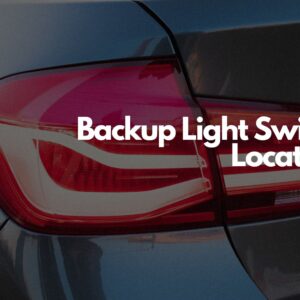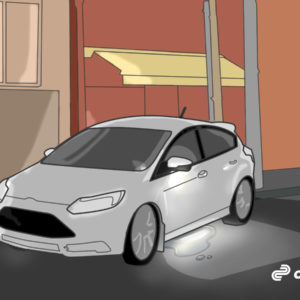Bumpers protect your car from impact damage and help keep you and your passengers safe during a collision. However, some vehicles have begun mounting certain exterior lights on their bumpers. These bumper-mounted lights are a fairly new development, but what are the reasons for moving some exterior lights to the bumpers? Are they legal and safe? Do they offer any advantages or come with disadvantages?
Why Do Some Cars Have Bumper-mounted Lights?
According to representatives from some car manufacturers, their design teams put certain exterior lights on the bumpers for aesthetic reasons. They wanted to improve the vehicle’s looks by making the tail lights more slender in appearance. Since the tail light assembly often included other illumination devices, like brake and turn indicator lights, they needed to split off the latter.
The following are examples of recent vehicle models with bumper lights:
Kia Sportage
Take the Kia Sportage as an example. A company spokesperson explained that their design team put the Sportage’s fog lights on both bottom corners of the front bumper for aesthetic appeal.
The Kia designers decided that the rear bumper should match the front bumper’s appearance by also sporting exterior lights. Furthermore, they wanted to make the tail lights slimmer.
Guided by these goals, the Kia design team worked on a separate set of turn indicator lights, reflectors, and back-up/reverse lights, and they mounted the lights on the rear bumper.
The Kia Sportage tail lights remain in their traditional position.
Chevrolet Bolt EUV
The Chevrolet Bolt EUV is one of the new electric car models offered by Chevrolet. As a pure electric vehicle (EV), it dispenses with an exhaust system since it doesn’t produce exhaust gases.
However, the lack of an exhaust system opened up considerable space in the Chevrolet Bolt EUV’s rear. Chevy designers took advantage by moving the brake lights and turn indicator lights down to the rear bumper.
One of the designers behind the Chevrolet Bolt EUV stated that they wanted to fill the space where the exhaust tip sits in a gasoline or diesel vehicle. At the same time, the design team wanted to retain the distinct slender shape of the Bolt’s tail lights.
Similar to what Kia did with the Sportage, the Chevrolet designers separated the brake and turn indicator lights from the tail lights. They moved the first two lights to the lower fascia of the Chevrolet Bolt EUV rear bumper.
LED Bumper Lights
Car designers leveraged light-emitting diode (LED) technology for their bumper-mounted lights. LED lights are easy to shape, and they also generate more illumination for their size. Thus, designers could make slender bumper lights that still produce enough illumination.

What Are Bumper Lights?
The term “bumper light” encompasses any lighting fixture on a vehicle’s bumpers instead of its body.
Depending on their type, bumper lights can do different things. For example, the Kia Sportage mounts the fog lights on its front bumper. Fog lights generate a bright light beam that can penetrate foul weather conditions like fog, torrential rain, and heavy snowfall. Since the fog lights were on the bumper, they also fell under the purview of bumper lights.
Another example of bumper lights is the turn indicator lights on the Kia Sportage. They differ from the fog lights in location, brightness, and purpose. However, since they are on the Kia Sportage rear bumper, these turn signal lights also count as bumper lights.
Are Bumper Lights Legal?
Manufacturer-designed bumper lights usually meet federal motor vehicle safety standards. They are street-legal and can go anywhere in the United States.
Before a vehicle becomes eligible for sale in the U.S., it must comply with various regulations. One of these is tail light regulations that require vehicles to have fixed brake lights. If the car or truck mounts a set of lights on movable bodywork, it must also have a set attached to a location that doesn’t budge.
Let’s go back to the Kia Sportage and Chevrolet Bolt EUV. Both models feature lights on their tailgates, which are movable bodywork. However, they remain legal in the U.S. because they have tail lights on their bumpers as well.
Aside from factory-issue bumper lights, there are also aftermarket products available. If you want to customize or enhance your vehicle, you can install these on a bumper capable of supporting them.

Are There Drawbacks to Bumper Lights?
Bumper lights might look great, but they’re far from perfect. They get their sleek appearance at the cost of other points.
Bumper light disadvantages include the following:
Smaller Size
For one thing, bumper lights are smaller than most lighting fixtures mounted on the car’s body. Otherwise, they cannot fit in the bumper without compromising durability, arguably more important than its ability to mount light fixtures. Their small size could make them more difficult to spot, especially over time.
Visibility
Another disadvantage of bumper lights is visibility. Bumpers aren’t designed for high visibility, first and foremost. Their low position reduces their prominence, which means any lights mounted on them will also be less visible.
Furthermore, many vehicle types have gotten bigger over the years, which means bumper-mounted lights may be even less visible.
Greater Risk of Damage
Bumper lights are also more likely to take damage during collisions. Their position on the bumper means they’re at risk during collisions. Even if they don’t show visible damage after impact, they might work erratically because an internal part got jostled or loosened.
Any information provided on this Website is for informational purposes only and is not intended to replace consultation with a professional mechanic. The accuracy and timeliness of the information may change from the time of publication.
































